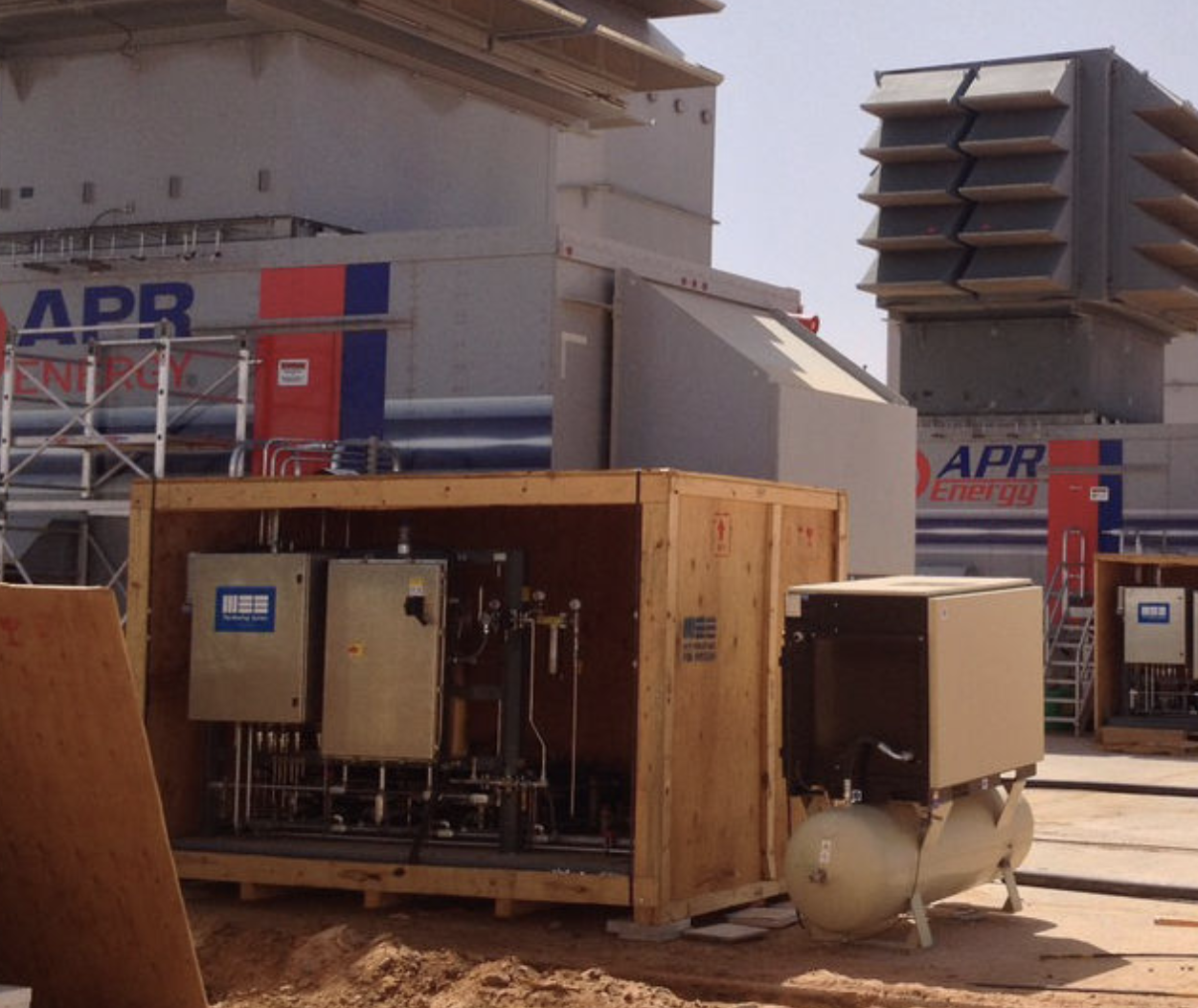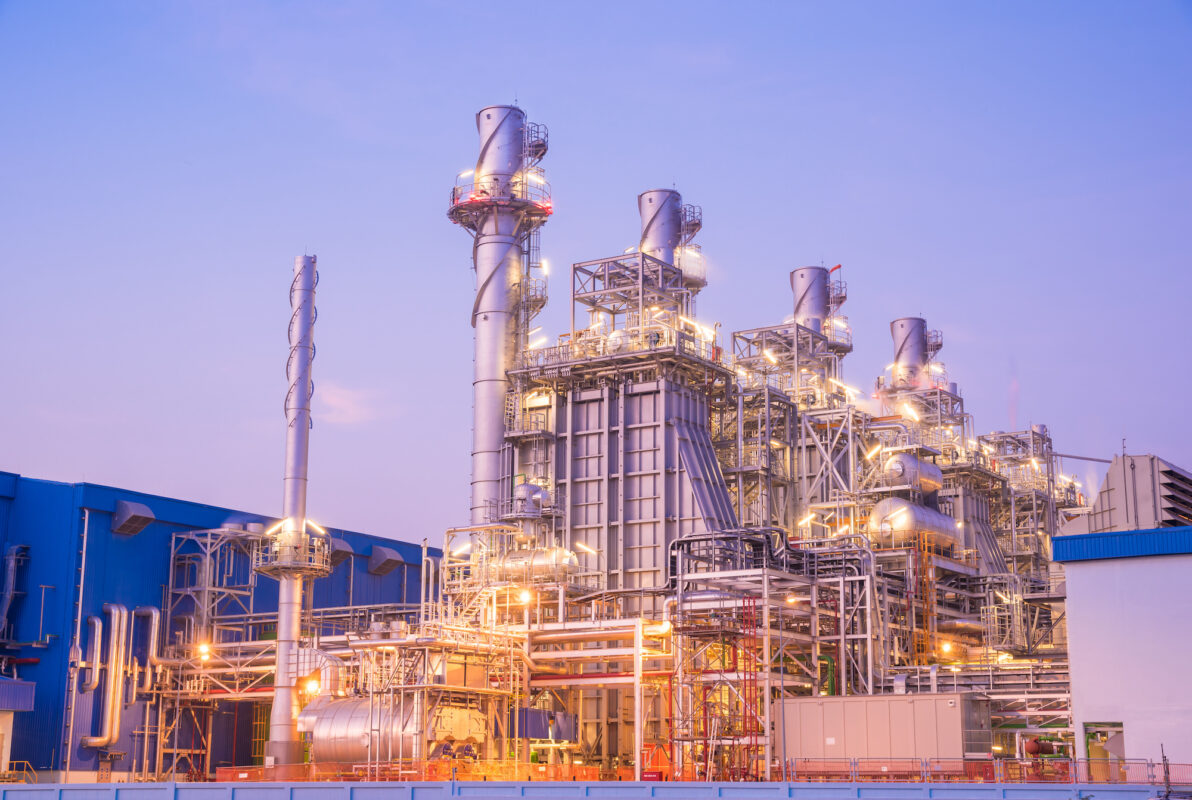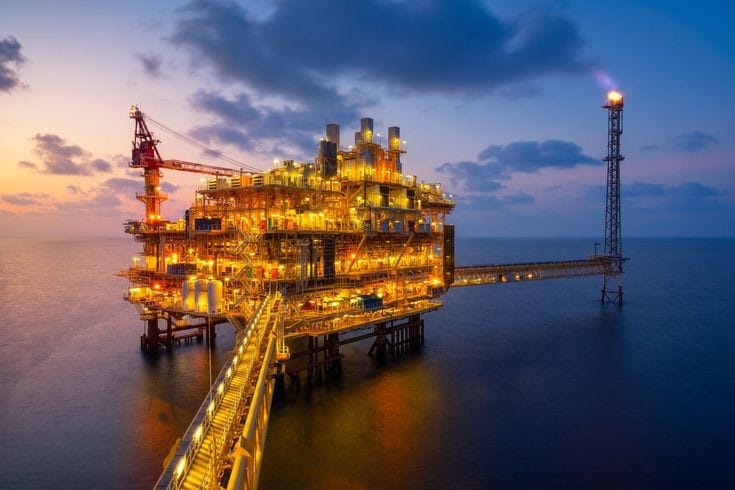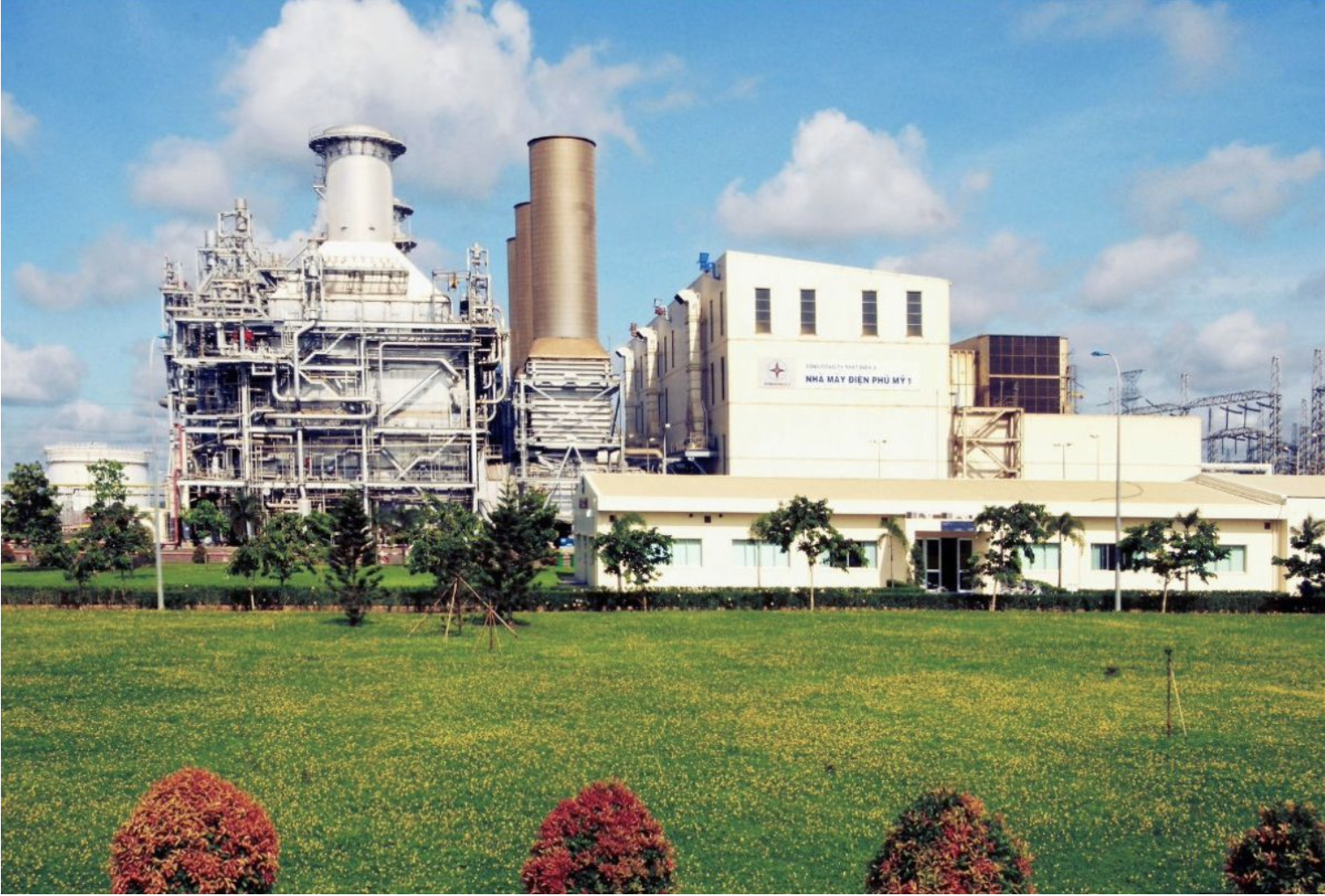MeeFog Boosts Power Output by 15% at Sahara Power Station | APR Energy Case Study
Gas Turbine Inlet Air Cooling
“Depending on ambient conditions, the fogging systems can run 100% of the time to maintain the desired increase in output. By using the MeeFog system, APR experienced a power boost of approximately 3 to 4 MW per turbine.”
– Tom Michaud, APR Energy Project Manager
APR Energy Jacksonville, Florida
General Electric Company of Libya (GECOL)
Tripoli, Libya
Background
Libya, with a population of just six million, has the world’s ninth-largest deposit of proved oil reserves (48 billion barrels) and Africa’s fourth-largest proved gas reserves (55 trillion cubic feet). The country derives about 95% of its export earnings, 80% of its GDP, and 99% of its government income from the energy sector. These reserves give the country the potential for widespread prosperity. However, much of the oil money had been siphoned off by long-term dictator Muammar al-Gaddafi and his associates.
There had been a lack of infrastructure investment in capital equipment during Muammar al-Gaddafi’s 40 year rule. – explained Tom Michaud, Project Manager for APR Energy
After the new government took over in 2012, one of its goals was to develop the infrastructure necessary for the country to get the full value of its underground resources. This involved strengthening Libya’s overtasked power generation and transmission system to eliminate rolling blackouts. Ali Muhairig, the Electricity Minister, aimed to quickly increase the generating capacity. In a press conference in July 2013, he explained that he had only received his budget two months earlier and it would take at least two years to build new power stations. Instead, he decided to lease bridging power from APR Energy to obtain the needed capacity within months rather than years.
Challenge:
When the General Electric Company of Libya (GECOL) needed to quickly enhance its power infrastructure, they decided to install a power station in Samnu, a remote location in the Sahara, approximately a day’s drive from the urban centers along the Mediterranean coast. Samnu receives less than 1⁄2 inch of rain per year and has an average summertime temperature of 40°C (104°F), with extremes as high as 45°C (113°F). The site and the urgency presented several engineering challenges.
Solution:
The Libyan government contracted APR Energy to provide and install four (4) fast-track, mobile turbine power units. The FT8 MobilePac gas turbine produces 23 MW at ISO conditions, 15°C (59°F) and 60% RH. However turbine output reduces to 20 MW when the ambient temperature rises to 40°C (104°F). To overcome this power loss, APR provided MeeFog systems for each gas turbine, designed to cool the inlet air by up to 20°C (45°F).
During testing, the MeeFog system improved the output of the gas turbines by as much as 15%, while using half the water that water injection in the combustor would require.
The Installation
APR Energy began operations in 2004, when cofounders John Campion and Laurence Anderson purchased the Alstom Power Rentals subsidiary of Paris-based Alstom Power, Inc. APR provides large-scale, fast-track solutions to provide seasonal peak capacity or for bridging power during new plant construction. In the spring of 2013, anticipating high summer peak demand exceeding available generation capacity, GECOL and Libya’s Ministry of Electricity and Renewable Energy contracted with APR to provide mobile gas turbines at four key sites, with a total of 250 MW. Then in June, when other vendors had failed to deliver, APR agreed to provide GECOL with an additional 200MW of diesel generators at two sites.
One of the locations chosen was Samnu. APR selected Pratt and Whitney FT8 MobilePac gas turbine packages for the site. While the gas fueled, water injected FT8s can generate more than 24 MW at 5°C (40°F), the output drops below 20 MW at 45°C (113 °F), a typical summer temperature. Over that same temperature range, the heat rate rises from 10,000 kJ/kWh to nearly 11,000 kJ/kWh.
Given the output and efficiency losses with high ambient temperatures, it is essential to use inlet cooling on those turbines. The problem was the lack of water. While the FT8s do come with water injection, because of the lack of water in the area, APR decided to use MeeFog inlet cooling systems.
APR Operations observed that MeeFog could provide the equivalent amount of power boost as the water injection system while consuming almost half the amount of make-up water,” says Michaud. “The quantity of water saved by not running the water injection system while maintaining the required power boost will significantly increase the overall life-cycle of the demin water system and its associated filters and mixed beds.
For the Samnu power station, there was a dedicated fog pump skid for each turbine. Each skid has three pumps and two motorized ball valves. These pumps are operated in a sequence that provides fourteen stages of fog output each with 24 operating nozzles. A weather station monitors the temperature and relative humidity and sends this data to a programmable logic controller (PLC). The PLC also connects to the turbines distributed control system (DCS) to receive data on the inlet air volume and to communicate to the DCS how much water is being injected. The PLC then computes, based on ambient conditions and air volume, how many of the 14 fogging stages can be turned on without exceeding the set points. To control the MeeFog system, the user inputs the desired amount of overcooling or undercooling as compared to saturation. Set points over 100% will result in the fog system injecting more water into the air stream than can actually be evaporated at the current ambient conditions. The excess water droplets (called overspray) are carried by the air stream into the compressor section where the heat of compression causes them to evaporate and further augment the power output.
The Benefits of MeeFog™ Technology:
Increased Power Output for Gas Turbines: MeeFog systems cool the inlet air of gas turbines, significantly boosting their output and making the turbines more efficient in high-temperature environments.
Water Efficiency: MeeFog systems use half the water compared to traditional water injection systems. This water savings is particularly valuable in regions with limited water resources, helping to lower operational costs.
Cost/Benefit Analysis:
At Samnu, the fogging system was designed for an ambient dry bulb temperature of 45°C (113°F) and a wet bulb temperature of 20°C (68°F), a difference of 25°C (45°F). The 14 stages could each provide 1.94°C (3.5°F) of cooling, so the entire system can provide the desired 45 °F of cooling, plus one stage of overspray.
Learn More
Want to learn more about successful Mee Industries’ gas turbine fog cooling systems installation projects and case studies?



